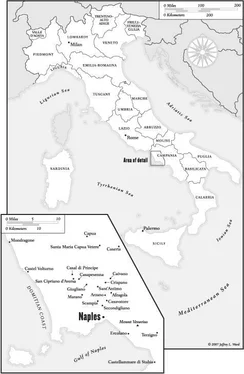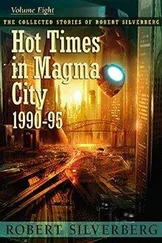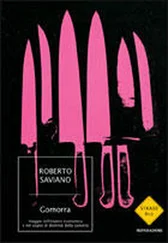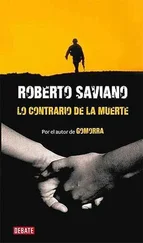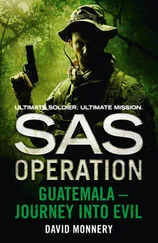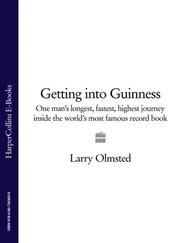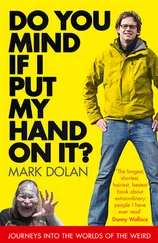Roberto Saviano - Gomorrah - A Personal Journey into the Violent International Empire of Naples’ Organized Crime System
Здесь есть возможность читать онлайн «Roberto Saviano - Gomorrah - A Personal Journey into the Violent International Empire of Naples’ Organized Crime System» весь текст электронной книги совершенно бесплатно (целиком полную версию без сокращений). В некоторых случаях можно слушать аудио, скачать через торрент в формате fb2 и присутствует краткое содержание. Жанр: Старинная литература, на английском языке. Описание произведения, (предисловие) а так же отзывы посетителей доступны на портале библиотеки ЛибКат.
- Название:Gomorrah: A Personal Journey into the Violent International Empire of Naples’ Organized Crime System
- Автор:
- Жанр:
- Год:неизвестен
- ISBN:нет данных
- Рейтинг книги:5 / 5. Голосов: 1
-
Избранное:Добавить в избранное
- Отзывы:
-
Ваша оценка:
- 100
- 1
- 2
- 3
- 4
- 5
Gomorrah: A Personal Journey into the Violent International Empire of Naples’ Organized Crime System: краткое содержание, описание и аннотация
Предлагаем к чтению аннотацию, описание, краткое содержание или предисловие (зависит от того, что написал сам автор книги «Gomorrah: A Personal Journey into the Violent International Empire of Naples’ Organized Crime System»). Если вы не нашли необходимую информацию о книге — напишите в комментариях, мы постараемся отыскать её.
Gomorrah: A Personal Journey into the Violent International Empire of Naples’ Organized Crime System — читать онлайн бесплатно полную книгу (весь текст) целиком
Ниже представлен текст книги, разбитый по страницам. Система сохранения места последней прочитанной страницы, позволяет с удобством читать онлайн бесплатно книгу «Gomorrah: A Personal Journey into the Violent International Empire of Naples’ Organized Crime System», без необходимости каждый раз заново искать на чём Вы остановились. Поставьте закладку, и сможете в любой момент перейти на страницу, на которой закончили чтение.
Интервал:
Закладка:
The Campania stakeholders often make use of the clans’ drug-trade routes to discover new territories to hollow out, new tombs to fill. The 2003 Midas investigation reported that waste disposal traffickers were already making contacts in Albania and Costa Rica. But every channel is open now: to the east, to Romania, where the Casalesi have hundreds and hundreds of hectares of land; to Africa, to Mozambique, Somalia, and Nigeria, where the clans have always had backing and contacts. During the tsunami, one of the things that shocked me was seeing the worried, tense faces of Franco’s colleagues. As soon as they saw the photos on the news, they turned pale, as if each one of them had a wife, a lover, or a child in danger. In truth, something much more precious was at risk: their business. After the tidal wave, hundreds of drums of hazardous or radioactive waste from the 1980s and 1990s were found on the beaches in Somalia, between Obbia and Warsheik. Media attention could have blocked the stockholders’ new deals and outlets. But the danger was immediately averted. The charity campaigns for refugees diverted attention from the barrels of poison floating alongside the cadavers. Even the ocean has become a place for endless dumping. Traffickers increasingly fill ship holds with waste, then simulate an accident, letting the ship sink. They make money twice: the insurance covers the accident and the waste is entombed in the deep.
The clans find space everywhere for waste, but the regional administration of Campania, run for ten years by an external commission because of Camorra infiltrations, was unable to dispose of its own trash. While waste from every part of Italy was finding its way illegally to Campania, Campania trash was being shipped to Germany at fifty times the removal price the clans offered their clients. Investigations indicate that in the Naples area alone, of eighteen waste management firms, fifteen are directly tied to the Camorra clans.
The south is flooded with trash and it seems impossible to find a solution. For years the waste has been made into eco-bales, enormous cubes of ground-up garbage wrapped in white. Just to dispose of the eco-bales already accumulated would take fifty-six years. The only solution ever proposed is incineration. Such as at Acerra, where the very idea of building an incinerator generated rebellion and fierce opposition. The clans are ambivalent about incinerators. On the one hand they’re opposed, since they would like to continue to live off landfills and fires, and the state of emergency also allows them to speculate on lands for eco-bale disposal, lands they themselves rent. Yet they’re ready to subcontract construction and management if an incinerator were to be approved. Although the judiciary investigations have not yet reached their conclusions, the people have. They’re terrorized, nervous, frightened. Afraid that in the clans’ hands, incinerators will become perpetual furnaces for half of Italy’s trash, and that all guarantees of environmental safety would be thwarted by the burning of poisons. Thousands of people are on the alert every time a defunct landfill is ordered reopened. Fearing that toxic waste passed off as ordinary trash will arrive from all over the place, they resist till the end rather than risk having their hometown become an uncontrolled depot for new dregs. When in February 2005 the regional commissioner attempted to reopen the landfill at Basso dell’Olmo near Salerno, townspeople spontaneously formed picket lines to impede the arrival of the trucks and block access to the dump. A continuous and constant defense, at all costs. Carmine Iuorio, thirty-four years old, died from exposure as he kept watch one terribly cold night. When they went to wake him in the morning, his beard was frozen and his lips were blue. He’d been dead for at least three hours.
The image of a landfill, pit, or quarry is increasingly a concrete and visible synonym for deadly danger for nearby residents. The Giugliano-Villaricca-Qualiano triangle near Naples has come to be known as the Land of Fires. Thirty-nine landfills, twenty-seven of which contain hazardous waste. An area with a 30 percent annual increase in landfills. When a site approaches capacity, the trash is set on fire. A tried and true method. Gypsy boys are the best at it. The clans give them 50 euros for each mound burned. The technique is simple. They circumscribe each hill with videocassette tapes, pour alcohol and gas all over it, twist the tape ends to form an enormous fuse, then move away, putting a cigarette lighter to the fuse. In a few seconds there’s a forest of flames, as if they’d launched napalm bombs. They throw foundry remnants, glue, and naphtha dregs into the fire. Dense black smoke and flames contaminate every inch of land with dioxins. The local agriculture, which used to export fruit and vegetables as far as Scandinavia, is collapsing. Plants sprout diseased, and the land grows infertile. But this disaster and the farmers’ rage are only the umpteenth advantage for the Camorra: desperate landowners sell off their fields, and the clans acquire new landfill sites at low—very low—costs. Meanwhile people are constantly dying of tumors. A slow and silent massacre, difficult to monitor since those who want to live as long as possible flee to the hospitals in the north. The Italian Superior Health Institute has reported that the cancer mortality rate in Campania cities with substantial toxic waste sites has increased by 21 percent in recent years. The lungs fester, the trachea starts to redden, a trip to the hospital for a CAT scan, where the black spots betray the presence of a tumor. Ask the ill of Campania where they’re from and they’ll often reveal the entire path of toxic waste.
I once decided to cross the Land of Fires on foot. I tied a handkerchief over my mouth and nose, the way the Gypsy boys do when they set fires. We looked like a gang of cowboys in a desert of burned garbage. I walked through lands devoured by dioxins, dumped on by trucks, and so gutted by fire that the holes would never completely be erased.
The smoke around me wasn’t dense, but more like a sticky patina on the skin, making me feel damp. Not far from the fires was a series of houses, each one sitting on an enormous X of reinforced concrete. Homes resting on closed landfills and unauthorized dumps, their potential exhausted now that they’d been filled to the point of exploding and everything combustible had been burned. Yet the clans managed to reconvert them to building zones. After all, officially they were pasture and farmlands. And so they built charming clusters of small villas. The terrain was unstable, however; landslides could occur and chasms suddenly open, so a fretwork of reinforced concrete propped up the dwellings, securing them. The houses were affordable. Everyone knew they were standing on tons of trash, but given the chance to own their own home, office clerks, factory workers, and retirees don’t look a gift horse in the mouth.
The Land of Fires looks like a constant and repeated apocalypse— routine—as if nothing else could surprise it in its disgust of leachate and old tires. Investigations have revealed the clans’ method for safeguarding their activity from interference by policemen and forest rangers. An ancient method, used by guerrilla warriors and partisans in every corner of the world. Shepherds grazing their sheep, goats, a few cows, are used as lookouts. Rather than watching over their flocks, the best are hired to watch out for intruders. They sound the alarm as soon as they spot a suspicious car. Glances and cell phones are unassailable weapons. I often see them wandering about, trailed by their shriveled and obedient flocks; once I joined them to see where the kids practice driving trucks. The 2003 inquiry Eldorado found that minors are increasingly employed for these operations. Truck drivers no longer want to haul loads all the way to the dump site; they don’t feel safe coming in close contact with toxic waste. It was a driver, after all, who set off the first important inquiry into waste trafficking in 1991. Mario Tamburrino had gone to the hospital with eyes like egg yolks, so swollen his lids couldn’t close. He had gone completely blind, and the outer layer of skin on his hands had burned away, as if gasoline had been ignited on his palms. A drum of toxins had opened near his face; that was enough to blind him and nearly burn him alive. A dry burn, for there were no flames. After that incident the truck drivers asked to use tractor trailers; with the drums at a distance behind the kingpin, they’d never even have to touch them. The most dangerous trucks are the ones hauling adulterated compost, fertilizer mixed with toxins. Just inhaling the fumes could permanently damage the entire respiratory system. The final step— unloading the drums onto smaller trucks to be taken directly to the pit—is the riskiest. No one wants to do it. Piled one on top of another, the drums often get dented, allowing fumes to escape. So when the tractor trailers arrive, the drivers don’t even get out. They let the kids unload and haul the drums to their final destination. A shepherd showed me a slope where the kids practice driving before a shipment arrives. Two pillows under their butts so as to reach the pedals, they learn how to brake on the way down. Fourteen, fifteen, sixteen years old. Two hundred fifty euros a trip. They’re recruited in a bar. The bar owner knows and doesn’t dare protest, but he offers his opinion to anyone who’ll listen as he serves espresso and cappuccino.
Читать дальшеИнтервал:
Закладка:
Похожие книги на «Gomorrah: A Personal Journey into the Violent International Empire of Naples’ Organized Crime System»
Представляем Вашему вниманию похожие книги на «Gomorrah: A Personal Journey into the Violent International Empire of Naples’ Organized Crime System» списком для выбора. Мы отобрали схожую по названию и смыслу литературу в надежде предоставить читателям больше вариантов отыскать новые, интересные, ещё непрочитанные произведения.
Обсуждение, отзывы о книге «Gomorrah: A Personal Journey into the Violent International Empire of Naples’ Organized Crime System» и просто собственные мнения читателей. Оставьте ваши комментарии, напишите, что Вы думаете о произведении, его смысле или главных героях. Укажите что конкретно понравилось, а что нет, и почему Вы так считаете.
